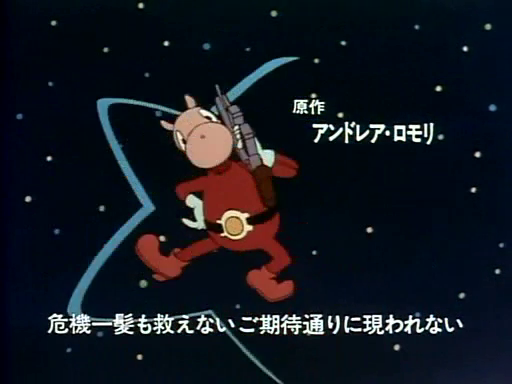
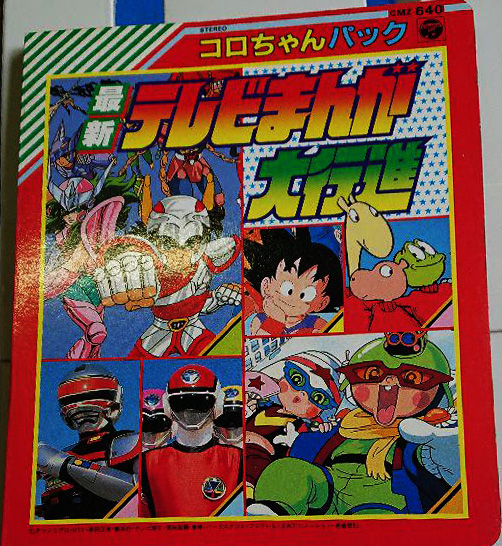
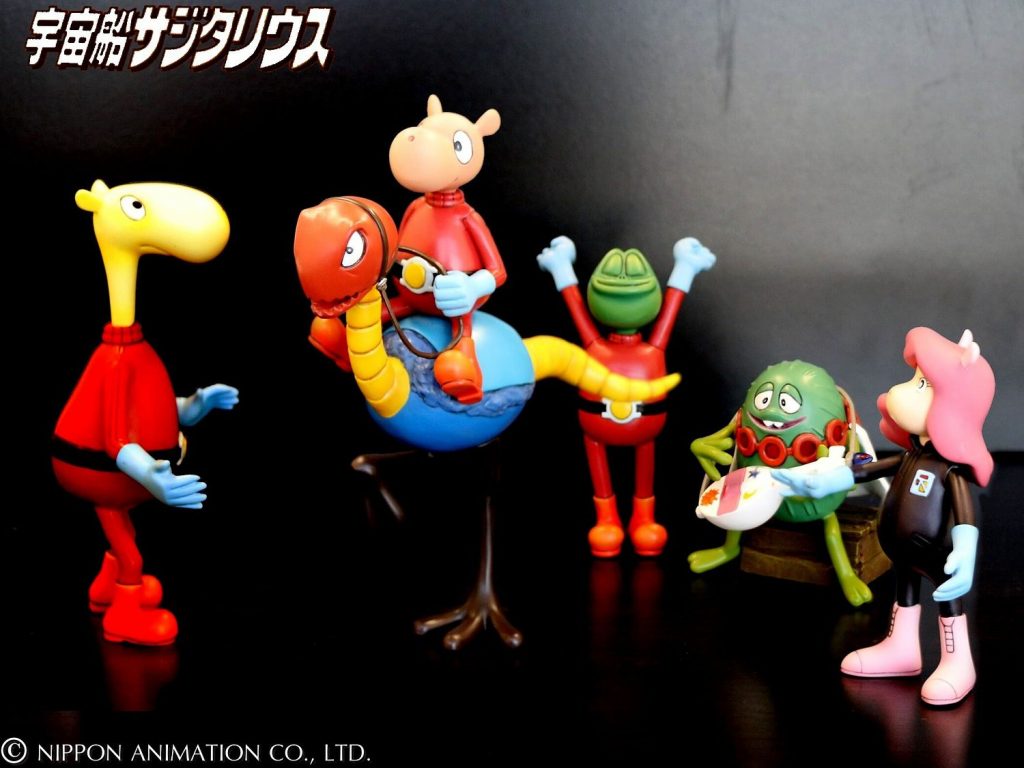
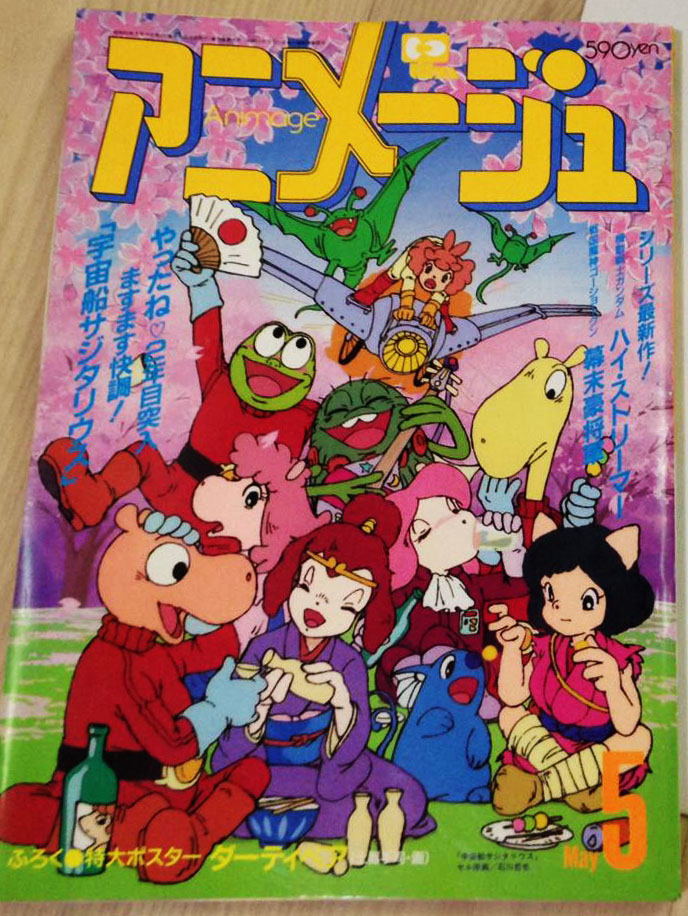




Amin Abbas Dubai
Andrea Romoli, an Italian physicist and comic book artist who is best known for the science fiction saga ‘Altri Mondi’ (1977), which was adapted into an animated TV series under the title ‘Uchūsen Sagittarius’, aka ‘Spaceship Sagittarius’ spoke exclusively to Arab News Japan about his professional career.
Romoli shared his inspiration for Japanese anime and culture and explained that when he began imagining characters and stories during his childhood, his family did not have a television set.
“My life during childhood, adolescence and much of my youth was TV free. Therefore my reference for animation were Walt Disney characters as Donald Duck and Mickey Mouse. My childhood toys were very stimulating my creativity: paper, pencil, china ink, colors, wooden constructions, and other phantasy stimulating games. There was no plastic or videogames,” he said.
“I remember that Italy started the publishing of the monthly comic (Topolino which is an Italian digest-sized comic series featuring Disney comics) during 1949 and I quickly became a faithful reader, even though I was not yet able to read,” Romoli said. “My favorite character was Donald Duck, and my favorite author was Carl Barks. At this time and during several years, I ignored that Carl Barks was the creator of the comics I enjoyed.”

The Italian artist said that anime and manga were not available at the time. However, in 1981 he visited Japan.
“I was on a trip for a week in Tokyo in 1981 with my publisher just for the agreement with Nippon Animation. I haven’t seen much of Tokyo and Japan, having only a free one day for visit some places of Tokyo. I remember that I visited a museum that was not very far from Ginza, in which I was impressed by a work of a Japanese artist entitled ‘Views of Tokyo from Rail’” he added.
About the most inspirational thing from Japanese culture he have adapted into his daily life, Romoli said: “I think that the series (Spaceship Sagittarius) had more impact on Japanese people than Japanese culture had on me, indeed the series “Spaceship Sagittarius” being known to many Japanese people as the Italian dish “lasagne”… My life wasn’t much influenced by that culture, exception made for the custom to take my shoes off every time I go home. On other hand, I had contact with Japanese people in 1974 as I was in Amsterdam by Nikon European branch. I was in mission for my company, in order to attend a microscopy stage. At that time I was Junior Optical Designer in a very important opto-mechanical company in Italy & I remained in that company till 2008 as responsible of optical design for space.
During the stage, the Japanese employers of Nikon let me know the best Japanese restaurant in Amsterdam. So I learned to appreciate Japanese cuisine. I like also Japanese classic painting, such Katsushita Hokusai…”
Romoli said the first complete comic he created was titled ‘Avventura su Efesto.’
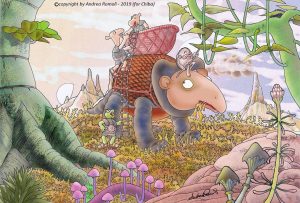
“I finished it within a year. It was composed by 19 plates in black and white (fine pen and china ink). Each plate was in A3 format (cm 42 x 30) vertical. With this work I would like to enter in the comic’s world,” he said, adding that he secretly believed his stories could be suitable as cartoons.
Romoli told Arab News Japan about the adaptation of his story to animation TV series (Spaceship Sagittarius) in Japan in the 1980’s, explaining: “At the beginning of 1979, ‘Fuga su Issar’ was published in giant size (about 35 x 50 cm) and presented by (Bologna Children Book Fair) with a stand only for my book. The first day of opening of the exhibition, at 9 AM in the morning, the art director of Nippon Animation took one of my books.”
“A week after we had, from Nippon Animation a proposal, an option for the production of a series of cartoons. This was the beginning of a long history which involved also an European producer. But he was excluded by Nippon Animation,” he added.
“A year after 1981, I was in Tokyo for the agreement and to see the pilot film of ‘Uchusen Sagittarius’ (Spaceship Sagittarius). This short film of few minutes impressed me very much.”
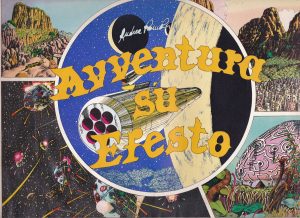
Romoli said that he did not hear any news about the series until 1988, when he was contacted by the Kappa Boys Club, Italian manga editors, and they told him of the great success of his series in Japan.
The series won a prestigious reward at the Osamu Tezuka’s Atom festival. Romoli said that online, he found that Japanese people were looking for his books and were willing to pay a large sum of money for a copy of ‘Avventura su Efesto.’
Uchusen Sagittarius was also broadcast with Arabic dubbing in the Middle East in the mid 80’s and Romoli said he is happy that his series is being featured in different countries around the world
“I confess that I didn’t have an accurate idea of the situation concerning worldwide diffusion of the series. Till today I knew that it was broadcast in Japan, Canada, Germany, in some countries of Spanish language, in Russia and other Slavic countries. So I’m grateful for the information I didn’t know. I hope that the anime was appreciated in Arab countries.”
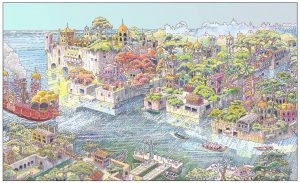
Regarding his upcoming projects in the near future, Romoli said: “First of all, I shall finish my last comic book ‘Kthalon – Porta Inferi’ (Kthalon – Hell Door), a work of about 100 pages, full in color just in progress at page78. It is a very demanding task as it’s the seventh book of ‘Altri Mondi’ (on new adventure of Toppe, Giraffo e Rana) which hopefully I will finish it within this year. Next, I will publish it as self-publishing only in Italy, but I’m open to other serious companies.”
“I also created some pictures for the Sagittarius characters. I’m selecting works for a possible future exhibition. One of my wishes is to return to Japan, in order to meet my fans, who are so many and very fond to me!” he added.